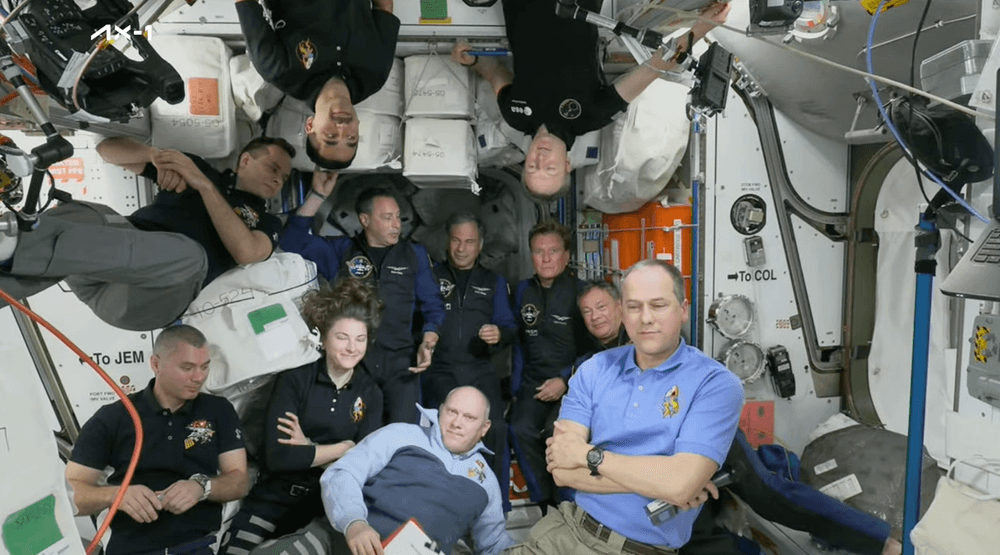Throughout the day, Eitan Stiva performs a variety of scientific experiments from the International Space Station, in the field of remote medicine.

At 17:00 Eitan completed the first part of the CRISPR experiment, which lasted about four hours, by the researchers Dr. Dodo Burstein from the Shmunis School at Tel Aviv University and Dr. Gore Pines from the Volcanic Institute. In this experiment, various components of diagnostic technology are tested in microgravity conditions on the International Space Station. The success of the experiment will contribute to the fact that researchers will be able to use the CRISPR systems for accurate diagnostics of bacteria and viruses that may attack crew members in space missions and in the future even diagnose diseases in space agriculture.
Ran Levana, CEO of the Ramon Foundation, the researchers leading the experiment and the doctoral students who conceived it, Dan Alon and the research associate, Dr. Karin Mitelman, arrived in the control room at the Rakie mission complex and watched Eitan perform the experiment on the space station:
In addition to this experiment, the Urinary Microbiome experiment by researchers Dr. Ben Bursi from the Oncology Center at Sheba Medical Center and Dr. Paul Chang at Thomas Jefferson University Hospital in the USA was completed in the morning - as part of this experiment, the researchers will examine the changes In the population of microorganisms inhabiting the urinary tracts of the Ax-1 team during all stages of their journey to the International Space Station - before launch, during the journey and after returning to Earth. The experimental insights will enable a breakthrough in understanding the clinical relationship between the microbiome population and the health of the urinary system, and will enable the provision of appropriate medical treatment.
At 18:00 an experiment began for the remote detection of the development of emotional distress and stressful situations led by Dr. Harel Brees from the Sheba Medical Center - the clinicians and researchers at ARC, the Center for Medical Innovation in Sheba, in the psychiatry department at the Sheba Medical Center and their partners at Thomas Jefferson University in the USA. As part of it, they are harnessing the unique opportunity of a rocket mission to the International Space Station, in order to test a methodology for remote monitoring of the development of emotional distress, which is being developed at the Center for Medical Innovation in Sheba, which uses an innovative application and advanced sensors. Throughout all phases of the space mission, the mission team will make daily use of the R-CARE application. The application, developed specifically for the task, challenges different cognitive performances that assess the level of stress and the feeling of empathy.
- More of the topic in Hayadan:
- Eitan Stiva completed the first Israeli biomedical research on the International Space Station
- Ax-1: Why the private mission to the International Space Station is a game changer, and details about the space station Axium is seeking to build
- Space mission experiments part 1: conducting remote tests and the effect of staying in space on the immune system
- Sky Task Experiments Part 2: Studies in the Brain
- Sky Mission Experiments Part 3: The rest of the medical experiments, space steak and the student experiments
